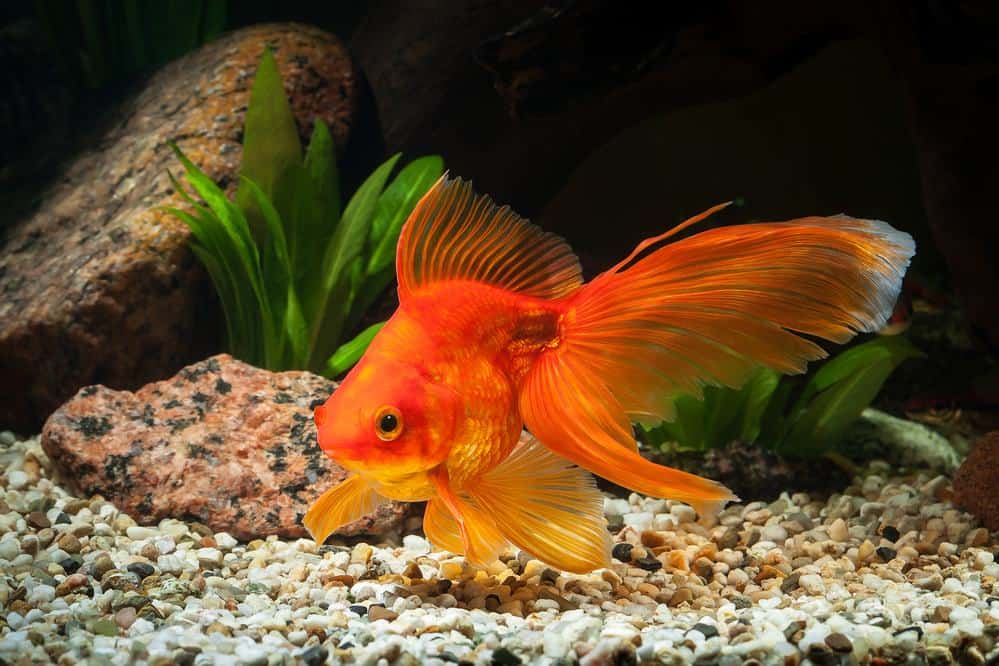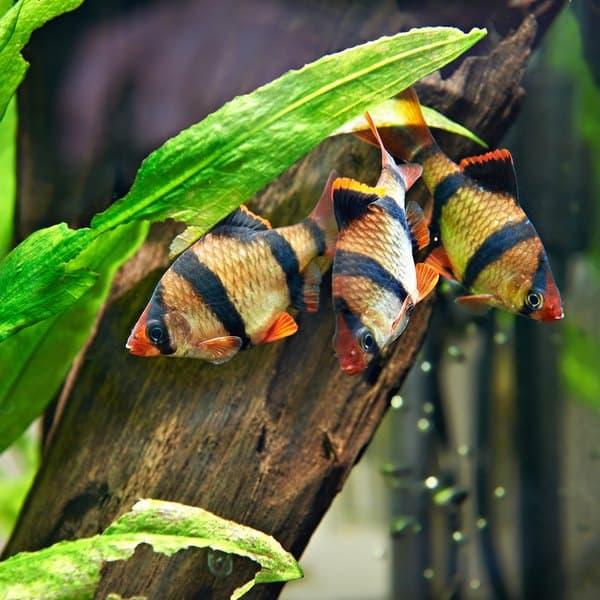Water quality has a direct impact on everything in an aquarium. The majority of new aquarium owners do not understand its importance. Knowing the basics of water chemistry is a simple way to maintain your fish and plants healthy.
Can you use vinegar to lower pH in an aquarium? The answer is yes, but it serves only as a temporary solution. It affects the water immediately through the process of ionization but it takes several hours to work completely and lower your pH. However, it is not among the highly suggested options. You should Buy this API pH Down from Amazon!
One of the most significant factors in an aquarium is pH. It is a measure of alkalinity and acidity in water which has a scale from 1 to 14. When it is 7, the water is neither acidic nor alkaline.
On a pH scale, low pH is when it is below 7. In such situations, it means that there are higher levels of acidity and the water is more acidic. For pH between 8 and 14, the water is less acidic and it becomes more alkaline.
While the required pH levels depend on the different species of fish, rapid changes in pH can be harmful or fatal to fish. It has a direct impact on the toxicity of chemicals in the water. Always make sure you get well informed about the pH of your tap water and the requirements of the species of fish you plan on putting in your aquarium.
To find out more about using vinegar and other ways to lower the pH in your aquarium, continue reading below.
Using Vinegar to Lower pH
As mentioned above, vinegar works in two stages when added to aquarium water. Ionization, which occurs instantly, is the process of releasing hydrogen ions. In the next few hours, the acetic acid together with oxygen will convert itself into carbon dioxide. This will result in a decrease in pH.
It is of the highest importance that you do not put too much vinegar in the water. A rapid decrease in pH can affect the health of your fish and even result in killing them.
The advisable rate of vinegar per gallon water is 1mL. Such amount will not cause any negative results, but it will lower the pH with about 0.2 – 0.3.
If your aquarium doesn’t have any plants, it is not advisable that you use vinegar. High carbon dioxide levels can also be damaging to fish. With plants, however, the dioxide will be absorbed in time. Simply said, vinegar is neither the safest option nor a long-term solution. Never forget to measure the pH levels both before and after using vinegar.
Other Ways of Lowering pH in an Aquarium
Driftwood
Contaminants in the water such as food leftovers are the main reason for pH increase. Driftwood is one of the best natural filters for water. It will take the contaminants out and lower the pH levels. Also, it will keep it steady. One thing to keep in mind is to look for more fibrous and coarse pieces of wood.
Driftwood has only one small negative side. It could change the color of your water but this can be prevented by a few simple actions. Before putting the driftwood in your tank, soak it for a few days in water. This way it will definitely not change the color of your aquarium water. If you do not want to wait for a few days, boil it in hot water.
Peat Moss
Driftwood and Peat Moss work in pretty much the same way. If you do not want to waste space on pieces of wood, peat moss is a good substitute. The difference is that peat moss floats in the water. If possible, place it in a filter bag to keep it in place.
Once again, you will have to soak the Peat Moss for a couple of days before introducing it to your aquarium. Do it in order to prevent color changes.
Finally, do not add a large amount. As we mentioned a few times already, lowering the pH too much is dangerous for your fish. Your best option is to test your water, then add a small amount of peat moss. Test the pH levels in a day and see if you need to add more.
Almond Leaves
One of the preferred natural ways to lower pH is by adding some almond leaves. Once again, they work as a filter of contaminants and this is how they lower pH.
Although it is close to the mind, we have to mention once again that you should soak them for a day or two in water, in order to prevent changes in watercolor.
Almond leaves are beneficial in other ways as well. They are known to prevent sicknesses and even cure some. There is nothing better than something that is organic and natural. Lastly, they bring a lot of character to aquarium settings. They look good and are often used as decoration as well.
Reverse Osmosis Filter
Until now, we gave examples only on natural ways to lower pH. They are perfect for smaller-sized tanks but will be inefficient in larger aquariums. Reverse Osmosis Filter systems are often quite expensive, but worth the investments.
While such systems are normally used in water treatment plants, they work perfectly for larger tanks. It is the safest way to filter up to 99% of the contaminants in the water. At the same time, such filter systems have a special structure that leaves out the smaller ions which improve the health of fish overall.
To be fair, if you have a large tank, you have already invested a lot of money. Maintaining a healthy environment is key to the well-being of your fish. Even if you cannot afford such a system momentarily, consider one in the future. It is a worthy investment and it will serve you for many years.
Additional Information
What does the term “Normal pH” mean?
While water with 7 pH is considered to be neutral, there is no such thing as normal pH. Every species of fish requires different pH levels. Also, pH is not static. It will vary in different days and can actually change in the span of a few hours.
Freshwater fish generally prefer less alkaline water, therefore in the range of 5.5 – 7.5 pH. As for saltwater species, they normally live in waters that are above 8.0.
Since freshwater fish are generally more common, here are some freshwater species and the pH levels that they naturally prefer:
- Goldfish – Out of the freshwater species, the Goldfish is the one that lives in water that is richest in alkaline. They prefer a pH around 7.5
- Neon Tetra – Around 6.0 pH
- Zebra Danio – Usually between 6.5 and 7.0 pH
- Angelfish – Normally between 6.5 and 7.0 pH
How often should you test pH?
All water parameters need to be tested at least once a month. It is a good idea to keep results written somewhere, although they will most likely not be needed in the future. Also, if there are sicknesses in your tank, test the pH before and after you treat the aquarium.
Also, as mentioned above, pH changes through the day and will most likely be different in the morning and in the evening. Therefore, when you do the monthly testing, try to do always do it at the same time of the day.
To sum up, pH is one of the most important factors for the well-being of your fish. Make sure you are well informed about the requirements of your species of fish before you introduce them to your aquarium.
Additional Questions
How much vinegar is needed to lower pH?
The safe amount of vinegar to add to your aquarium depends on the size, of course. Adding too much is dangerous. It is safe to say that adding 1 milliliter of vinegar for each gallon is not going to put your fish at risk. This amount will normally lower the pH by not more than 0.3 on the scale of 1 to 14.
How do I lower the pH in my fish tank with baking soda?
Baking soda is not used to decrease pH. It actually has the exact opposite impact. Baking soda is used to increase the total KH of an aquarium. When the KH is higher, the pH is higher as well. Therefore, you cannot lower the pH in your fish tank with baking soda, you can only increase it.
Can you use vinegar to lower pH in hydroponics?
The case is just the same. It is possible but only as a short-term solution. There are far better options to lower pH, natural or not.



Stephen Tang
Sunday 24th of May 2020
Can I add vinegar to my aquarium to lower the pH and ammonia level in the tank?
Carolyn Meehan
Wednesday 13th of May 2020
Thank you! Thank you! Thank you! You are the best. The water had been in the aquarium for a week before the fish came, and for the last week the fish were wonderful. Last night I added more water thinking that it looked low. I used tap water (which I foolishly forgot that I always leave 2 gallons from the tap for a week before transition). The reaction this morning was horrible. They are recovering and I am grateful, as they were my Mother's Day present from my daughter. I put in the driftwood that has been here forever and hope the water doesn't change, but if it does ... I will change the water (25% of it at a time). I put in the vinegar as my fish were gasping at the bottom of the tank and now they are swimming around and only gulping once in awhile. Thank you again, Carolyn
Saurabh Kumar
Wednesday 13th of May 2020
Hey Carolyn, glad I could help, this makes me so happy. Thanks for sharing your story!